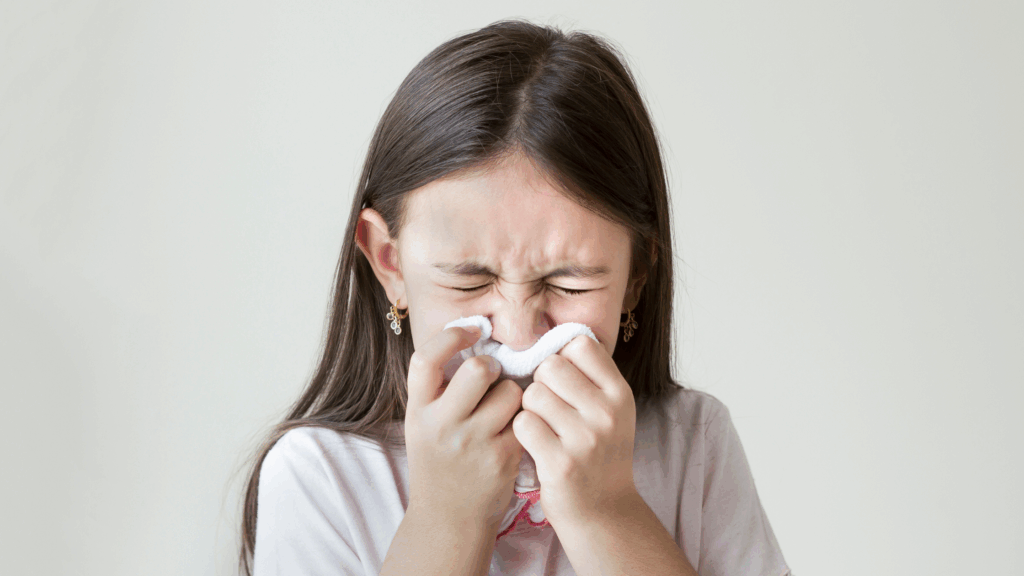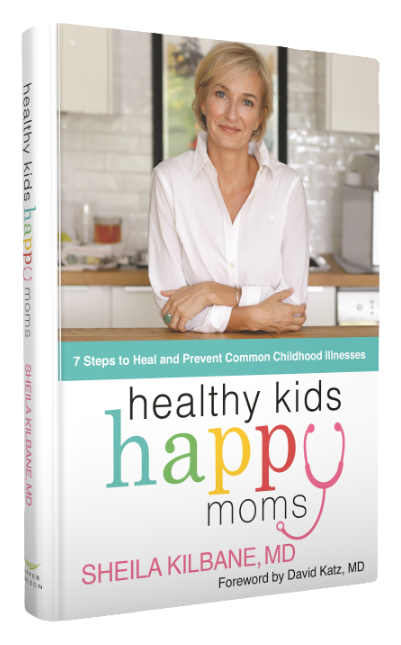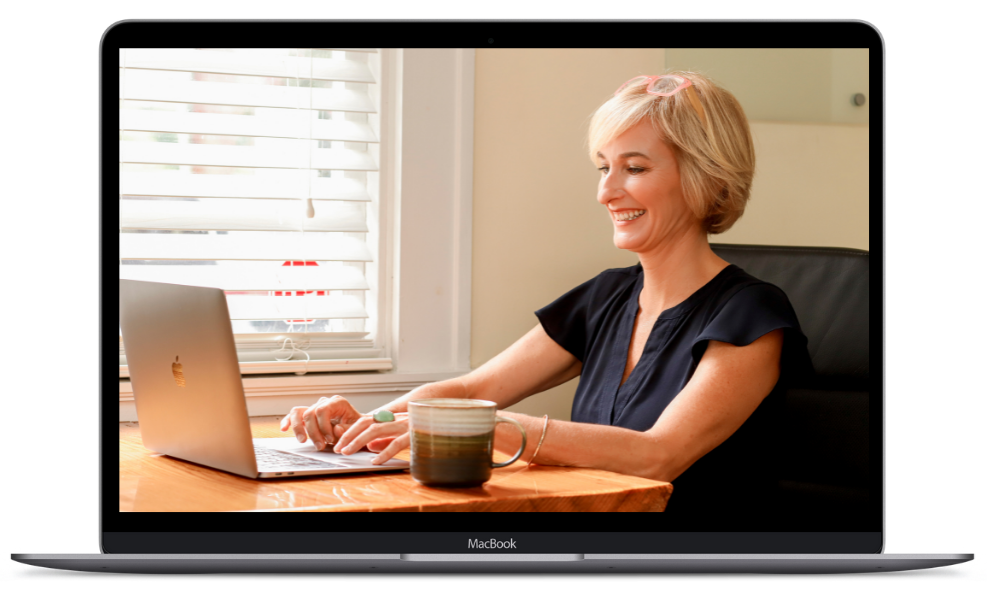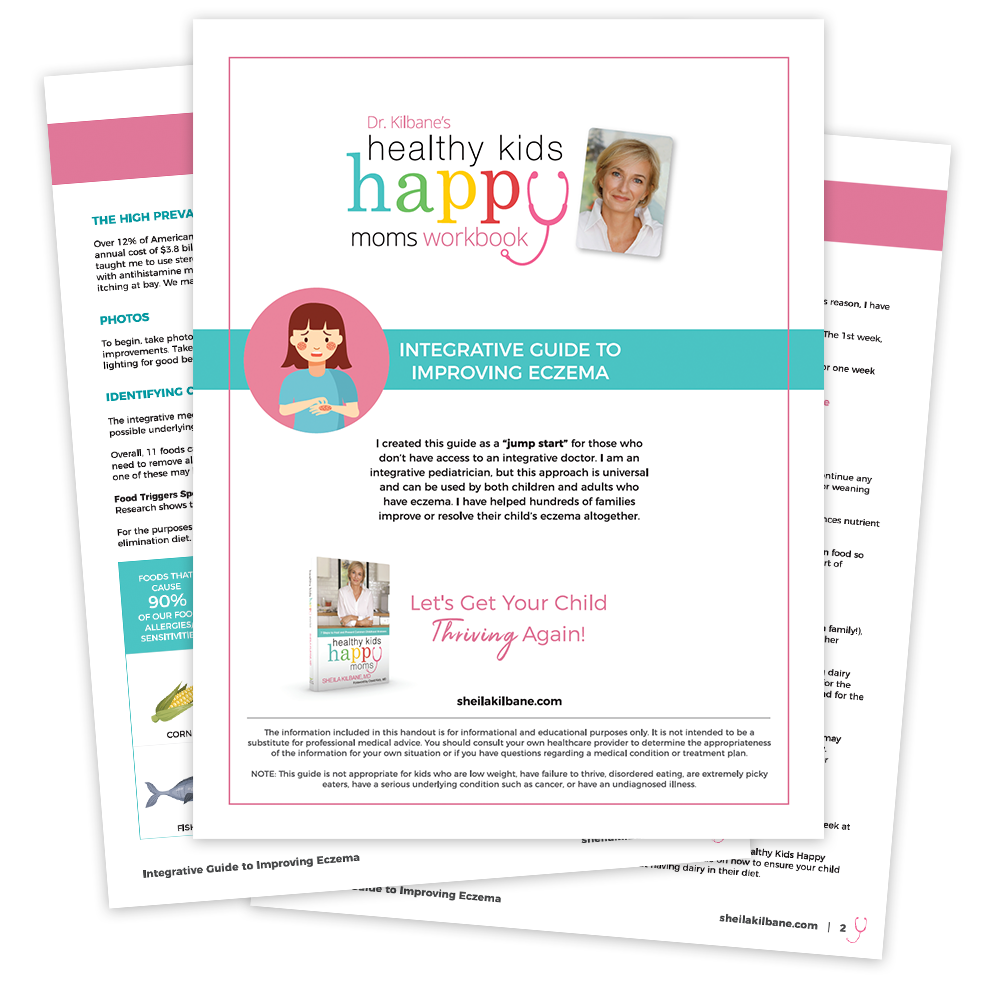There’s a number of common sunscreen myths these days. This mixed information can make it confusing to know what separates fact from fiction. Let’s see if we can clear up some common questions–and misconceptions–about sunscreen!
Common Sunscreen Myths
Myth #1: Sunscreen Causes Cancer
False. According to current research, there is no evidence sunscreen causes cancer (as long as you stay away from certain ingredients) but there is strong evidence to suggest UV rays from the sun and tanning beds do.
That being said, in the past, some sunscreens were in fact recalled for being contaminated with the chemical benzene. Other chemicals to avoid include parabens and phthalates.
I recommend using a sunscreen that doesn’t absorb into the skin (see next myth for more details!).
Additionally, there are other ways to protect yourself from the sun besides sunscreen alone. Those options include:
- Wearing a brimmed hat
- Wearing sunglasses with UVA and UVB protection
- Using an umbrella or seeking shade, especially between 10 am – 4 pm when the sun is strongest
- Wearing sun protective clothing with UPF 50+ (like this adorable rash guard made for kids!)
Myth #2: All Sunscreens are the Same
False! Remember how I recommended using sunscreen that doesn’t absorb into the skin?
This is known as a physical blocker sunscreen–different from its counterpart, a chemical sunscreen. Chemical sunscreens contain active ingredients that absorb the UV rays as it hits the skin.
Physical blocker sunscreens (referred to as mineral sunscreens) use ingredients that form a barrier on the skin’s surface that reflect UV rays.
In our practice we like to recommend All Good Sunscreen. It’s a Mineral Sunscreen Spray that isn’t sticky, greasy, smelly, or full of chemicals. Plus, it’s made from reef-safe non-nano zinc oxide and botanical ingredients, and is now in a handy dandy spray!
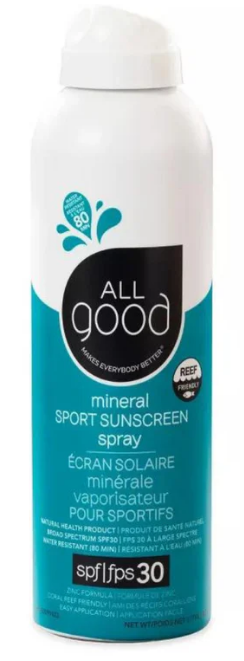
We really like All Good Sport. It’s oxybenzone-free, made with only Reef Friendly ingredients. It’s also made with non-nano zinc oxide and botanical ingredients. This spray sunscreen makes application easy for the entire family!
The FDA and the American Academy of Pediatrics (AAP) recommend keeping newborns and babies younger than 6 months out of direct sunlight. The best sun protection for these infants is to stay in the shade. Look for natural shade, such as under a tree. Or create your own shade under a beach umbrella, a pop-up tent, or a stroller canopy.

Lauren’s daughter, Sylvie, is a styling example of how to keep babies under six months of age protected from the sun!
Regardless of which type of sunscreen you choose, be sure to select one that is broad-spectrum, meaning it protects your skin from both UVA and UVB rays, and has a sun protection factor (SPF) of 30.
Myth #3: SPF and Reapplication
False. SPF 50 allows about 2 percent of UVB rays to hit your skin, whereas SPF 30 allows 3 percent.
However, the difference in SPF does not change how frequently you should reapply sunscreen–no matter the SPF, we recommend reapplying sunscreen every 80 minutes, especially after swimming or sweating.
For best results, also be sure to first apply sunscreen 15 minutes before sun exposure!
Myth #4: Any Amount of Sun Exposure is Bad
False! Yes, wearing sunscreen is important, however, a small amount of natural sun exposure on your bare skin is necessary.
This helps your body produce vitamin D which is critical for bone health and other essential functions within the body. Your body does not synthesize vitamin D when you have sunscreen on.
Aim for 10-20 minutes of bare skin sun exposure midday a few times per week. If you expect to be in the sun for longer than 20 minutes, then apply that sunscreen and enjoy the sunshine!
If you’re planning on spending a lot of time at the neighborhood pool this summer, be sure to check out my other blog, “Swimmer’s Ear: How to Prevent It and Treat It.”
References:
- Van Thomme and Kellie Bramlet Blackburn, G. (2024, May 31).
9 sunscreen myths debunked. MD Anderson Cancer Center.
https://www.mdanderson.org/cancerwise/sunscreen-myths-debunked.h00-159697545.html
This blog post contains affiliate links, which means I may earn a commission if you make a purchase through these links.


